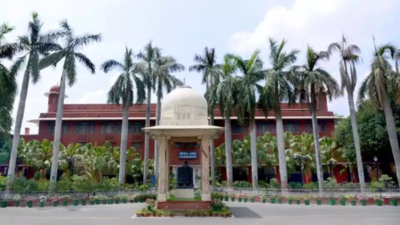
More than a hundred years ago, when the capital of British India shifted from Calcutta to Delhi, an important realisation struck Lady Hardinge, the wife of Viceroy Baron Charles Hardinge.
Amidst plans for wide roads and stately buildings, there was no space carved out for the ambitions of Indian women in medicine. Determined to change that, she spearheaded the establishment of a medical college exclusively for women — a first in North India.The foundation stone was laid on March 17, 1914, and the college was originally named Queen Mary College and Hospital, in honour of the Queen’s visit to India. Sadly, Lady Hardinge passed away before seeing her dream come alive.
But her vision endured. When the college officially opened on February 7, 1916, it was renamed Lady Hardinge Medical College, paying tribute to the woman who championed its creation.
A modest start with a strong purpose
The college began with just 16 students and a single principal, Kate Platt, in what was then the Imperial Delhi Enclave. Its affiliation with the University of the Punjab meant students had to take their final medical exams at King Edward Medical College in Lahore. In the years following Independence, the institution was brought under the University of Delhi in 1950, and postgraduate medical education was introduced four years later.
One of the college’s early pillars was Ruth Wilson, later known as Ruth Young, who became the first professor of surgery and later served as principal from 1936 to 1940. Her tenure marked the beginning of a faculty legacy that combined rigour with mentorship.
Growth beyond the classroom
In 1956, the institution expanded with the establishment of the Kalawati Saran Children's Hospital, adding to its clinical and academic strength. The governance of the college also evolved.
Initially run by a governing body, it came under the purview of the Board of Administration formed by the central government in 1953. Eventually, in 1978, its management was fully transferred to the Ministry of Health and Family Welfare under an Act of Parliament.Today, one of the director professors is appointed as the president of the college, the most senior position within the institution.
Opening its gates and growing its reach
Though it began as a women-only institution, since 1991, Lady Hardinge Medical College has also been catering to male patients through its teaching hospitals.
The MBBS programme currently admits 200 students annually, and its hospitals serve thousands of patients every year.The college runs two major hospitals — Smt. Sucheta Kriplani Hospital, which has 877 beds, and Kalawati Saran Children’s Hospital, which houses 350 beds. Together, they offer tertiary-level care and critical exposure for budding medical professionals.
A centre of research and public health leadership
Beyond clinical care, Lady Hardinge Medical College has also made a mark in medical research.
Its Department of Microbiology is globally respected, particularly for its work in salmonella phage typing. It has been designated a WHO Collaborating Centre for Reference and Training in Streptococcal Diseases for the South-East Asia region.The college has also played a significant role in India’s public health initiatives. It houses an AIDS surveillance centre and in 2007, it became home to India’s first Antiretroviral Therapy (ART) centre for children, a landmark in paediatric HIV care.
A vibrant campus rooted in legacy
Today, the LHMC campus in central Delhi reflects a blend of heritage and modern infrastructure. It hosts lecture halls, laboratories, an auditorium, a library, sports facilities, and residential hostels. While the buildings have changed and the student strength has grown, the founding spirit of the institution remains intact — to create compassionate, skilled doctors and open doors for women where none existed.
From a tribute to one woman’s foresight to a national centre of excellence in medicine, Lady Hardinge Medical College continues to shape India’s healthcare future — one student at a time.

 4 hours ago
49
4 hours ago
49




























 English (US)
English (US)